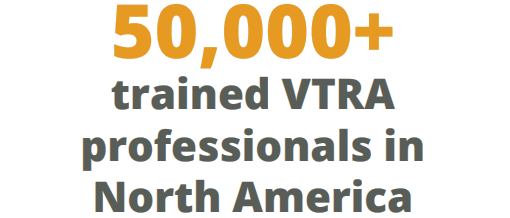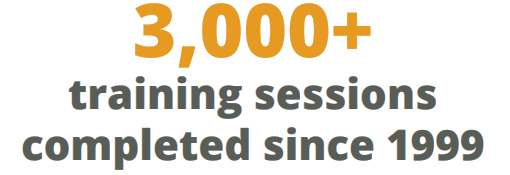VIOLENCE THREAT RISK ASSESSMENT
(VTRA)
VTRA is a comprehensive three-stage violence prevention model that addresses all forms of violence. It allows trained teams of professionals to identify early risk indicators in persons of concern and guides these multi-disciplinary teams through high-end threat assessment cases from data collection to data-driven interventions.
On April 20th, 1999, two students entered Columbine High School in Littleton, Colorado and carried out an elaborate plan to terrorize their school. This wasn’t the first school shooting in United States schools but it was by far the worst. Canadians, like our American counterparts, were shocked at the depth of violence in North American schools. Eight days later a Canadian student entered a Canadian school with hundreds of rounds of ammunition and opened fire.
The shootings in Littleton, Taber, Montreal, Virginia and others impacted multiple systems, and many students, staff, and parents across North America understood the possibility that it could happen to anyone. This reality has led school jurisdictions and associated professionals to look closely at how to respond to serious crises in schools—including violence—and how to deal with high-risk student behaviour. In response, NACTATR and Kevin Cameron created the now highly-successful school- and community-based Violence Threat Risk Assessment (VTRA) training program and protocol.
TRAINING:
A distinguishing feature of the model is the use of a truly “functional” multidisciplinary team to assess the level of threat and determine appropriate interventions. A team may involve Human Resources (HR) and Management, Supervisors and when necessary Police, Social Work Agencies, Community Mental Health Workers, Hospitals, Probation/Parole and other professionals. VTRA facilitates communication and builds trust between organizations and individuals that sometimes have difficulty coordinating their efforts.
We train multiple-stakeholder teams to use VTRA. Trainings usually comprise of around 80 people. These hands-on sessions are very practical, using real-world examples and actual case studies. The end result is a team with a shared vision for success that can consistently use common language, concepts, and take unified actions.
OPERATIONAL SUPPORT:
We provide ongoing support to make sure that VTRA is being used properly and to its fullest capacity. VTRA is a practical approach to building teams that can monitor, assess, and intervene to prevent violence within a community. It teaches behavioral analysis and threat assessment and provides a foundation for intervention around high-risk individuals. VTRA processes are applied to meet the needs of entire communities, individual school districts, colleges and universities, workplaces, corporations, Veteran’s Affairs, government departments and law enforcement.


VTRA Level 1 Training focused on concepts and variables necessary to conduct initial data-driven assessments and immediate risk intervention as well as how to create a Community VTRA Protocol.
VTRA Level 2 Training for VTRA Level 1 trained professionals and leaders focused on techniques to identify and address foundational risk enhancers that require multi-stakeholder collaboration.
VTRA Level 3 Training for VTRA Level 2 trained professionals and leaders focused on long-term treatment planning for complex cases.

